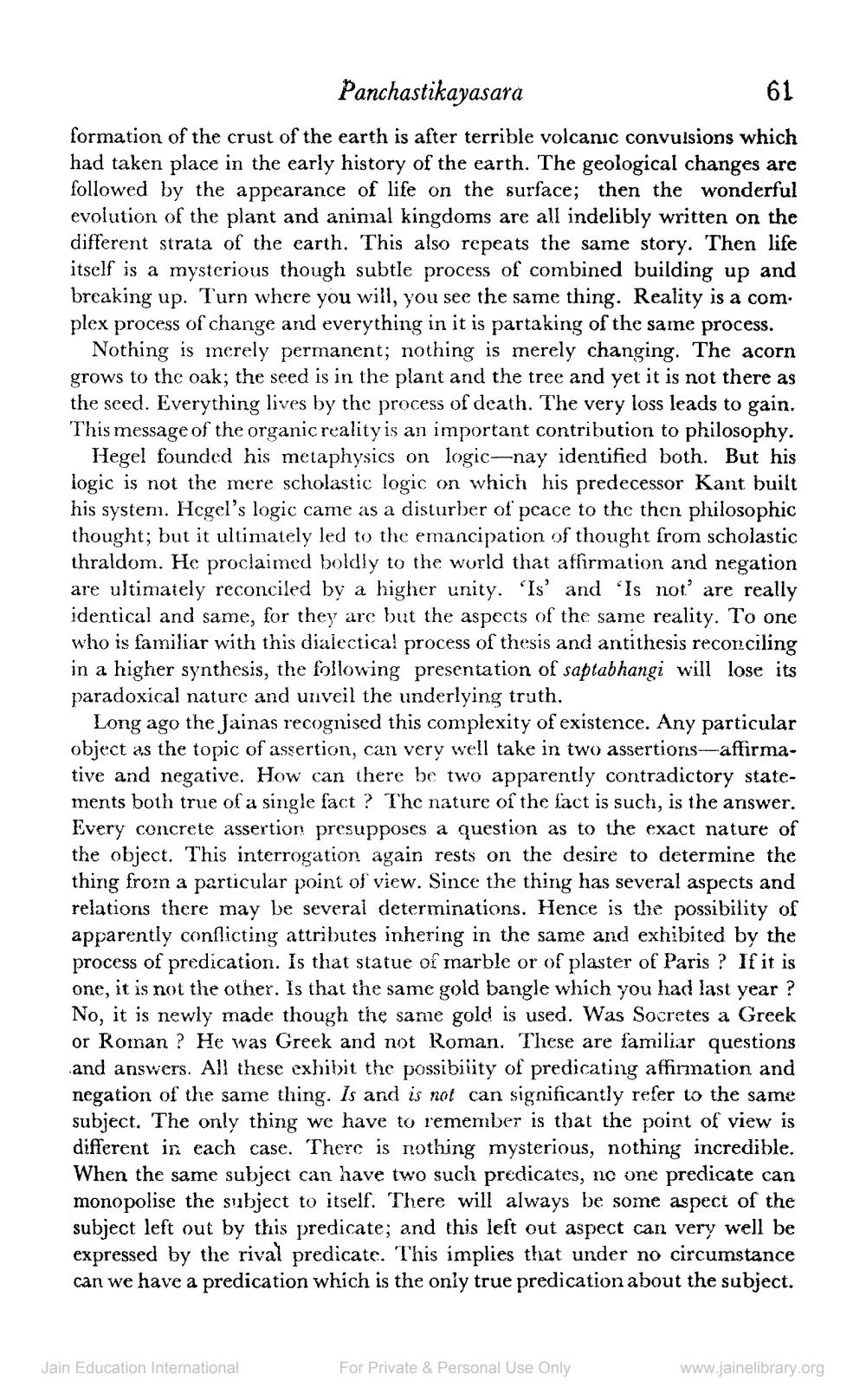________________
Panchastikayasara
61
formation of the crust of the earth is after terrible volcanic convulsions which had taken place in the early history of the earth. The geological changes are followed by the appearance of life on the surface; then the wonderful evolution of the plant and animal kingdoms are all indelibly written on the different strata of the earth. This also repeats the same story. Then life itself is a mysterious though subtle process of combined building up and breaking up. Turn where you will, you see the same thing. Reality is a com. plex process of change and everything in it is partaking of the same process.
Nothing is merely permanent; nothing is merely changing. The acorn grows to the oak; the seed is in the plant and the tree and yet it is not there as the seed. Everything lives by the process of death. The very loss leads to gain. This message of the organic reality is an important contribution to philosophy.
Hegel founded his metaphysics on logic-nay identified both. But his logic is not the mere scholastic logic on which his predecessor Kant built his system. Hegel's logic came as a disturber of peace to the then philosophic thought; but it ultimately led to the emancipation of thought from scholastic thraldom. He proclaimed boldly to the world that affirmation and negation are ultimately reconciled by a higher unity. 'Is' and 'Is not' are really identical and same, for they are but the aspects of the same reality. To one who is familiar with this dialectical process of thesis and antithesis reconciling in a higher synthesis, the following presentation of saptabhangi will lose its paradoxical nature and unveil the underlying truth.
Long ago the Jainas recognised this complexity of existence. Any particular object as the topic of assertion, can very well take in two assertions-affirmative and negative. How can there be two apparently contradictory statements both true of a single fact? The nature of the fact is such, is the answer. Every concrete assertion presupposes a question as to the exact nature of the object. This interrogation again rests on the desire to determine the thing from a particular point of view. Since the thing has several aspects and relations there may be several determinations. Hence is the possibility of apparently conflicting attributes inhering in the same and exhibited by the process of predication. Is that statue of marble or of plaster of Paris? If it is one, it is not the other. Is that the same gold bangle which you had last year? No, it is newly made though the same gold is used. Was Socretes a Greek or Roman? He was Greek and not Roman. These are familiar questions and answers. All these exhibit the possibility of predicating affirmation and negation of the same thing. Is and is not can significantly refer to the same subject. The only thing we have to remember is that the point of view is different in each case. There is nothing mysterious, nothing incredible. When the same subject can have two such predicates, no one predicate can monopolise the subject to itself. There will always be some aspect of the subject left out by this predicate; and this left out aspect can very well be expressed by the rival predicate. This implies that under no circumstance can we have a predication which is the only true predication about the subject.
Jain Education International
For Private & Personal Use Only
www.jainelibrary.org




